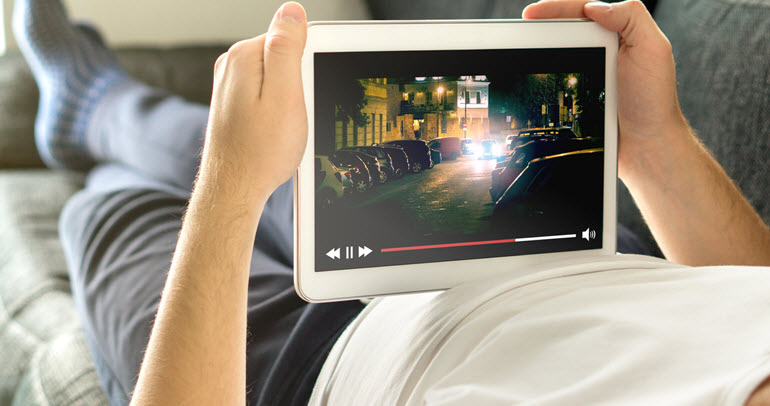
From chocolates and clothing to workouts and makeup, the subscription economy has made its way into just about every industry imaginable. Even automobile manufacturers are getting into the act, offering customers the chance to subscribe to their car lines for a monthly fee.
The impact on consumers’ wallet is significant—especially consumers’ spending on digital subscriptions. According to The New York Times, Americans spent an average of $640 on digital subscriptions in 2019, including streaming video, music, dating apps, cloud storage and productivity tools—a 7% increase from $598 in 2017.
For video streaming subscribers in particular, as the number of live TV, sports-only and on-demand streaming options grows, juggling all of these services—and paying for them—is starting to take a toll. As services become more fragmented and companies continue to wall off their content, consumers appear to be losing control over what they’re spending due to the sheer number of options available, complex bundles and rising costs.
To get a sense of what consumers have on their minds when it comes to streaming services, look no further than some of the recent headlines: “How to Navigate a Flood of Streaming TV Subscriptions.” “How to Pick the TV Streaming Services You Actually Want.” “How Much Are We Paying for Our Subscription Services? A Lot.”
Although consumers are currently happy with their subscription content, they become less satisfied as the number of subscriptions increases, according to a study conducted by the Escalent Telecom team. Subscription fatigue sets in and consumers feel frustrated that they are paying for services they are not fully using. Providers may even lose their early adopters. And even though subscribers are willing to pay more to get the content they want, once they hit the $50 mark, they start thinking about hitting the “Cancel” button and looking for better deals—if they even realize they’ve reached their spending limit, that is.
We also found that 20% of subscribers underestimate the number of subscriptions they actually have. It’s a percentage that’s sure to go up as subscribers keep adding new services, and one of the reasons we believe costs may be getting out of control.
With the industry in flux, providers will need to find ways to provide subscribers with the kind of value that won’t get lost in the wider sea of streaming services. With so many services competing for consumer attention, only those that can differentiate and establish the most viable pricing models will survive.
The Spiraling Costs of Subscriptions
Streaming video promised to be the answer to cable subscribers’ woes. No long-term contracts. Lower prices. And the end of black box bundles. And even though streaming costs are typically lower than the costs of cable packages (depending on how many services you subscribe to and how many screens your cable package includes), many streaming subscribers still pay for cable TV.
According to research by Reelgood, 91% of Hulu subscribers, 77% of Prime Video subscribers and 51% of Netflix subscribers have cable TV service. This abundance of services continues to feed the ongoing problem plaguing the subscription economy. Many consumers don’t realize just how much their subscriptions are costing them. In fact, when we asked consumers if they would pay for more subscriptions just to keep getting the content they currently have, they were OK with handing over another $5 here or another $10 there every month—many don’t consider that $5 or $10 each month adds up to $60 or $120 each year.
It’s the ongoing debate over whether or not streaming is saving money for cord-cutters. The short answer is yes, but costs are going up for both cable TV and streaming services. So, for consumers who pay for cable, the introduction of streaming services is merely increasing their overall spend. For those who have cut the cord, streaming services may be a cheaper way to get the content consumers want, but because people aren’t managing their subscriptions very well, those costs are bound to rise.
Bundling Adds to the Confusion
A chief complaint about cable providers is that consumers didn’t know exactly what they were paying for. With triple-play bundling for internet, phone and cable, knowing what each service costs has always been an enormous challenge. Hence, the allure of cord-cutting: Streamline your service and only pay for what you want.
But now we see the same spending confusion happen with streaming services, and the trend is beginning to reverse itself. Amazon bundles Prime Video with other Amazon services—including shipping and storage—so many subscribers may not have a clear picture of how much they’re paying for what. Netflix comes bundled with T-Mobile. And as Netflix raised prices last year, T-Mobile began adding a two dollar surcharge to offset this cost and we expect this to repeat if Netflix raises their price again.
Verizon is “giving away” Disney+ (well, for the first year, at least). AT&T is doing the same with HBO. Hulu is bundling with Disney+, Spotify and ESPN. And consumers are getting lost in the middle of this complex ecosystem. Sure, they’re willing to add on more subscriptions, but they also want a way to manage them.
One way to alleviate consumer confusion could be through an aggregator service—something Apple already offers with its Apple TV app. While adoption of their streaming service, Apple TV+, is new to the market and still gaining share, the company has a view to being the central hub for all customer subscriptions to make it easier for customers to manage and find the content they want to watch. Apple is likely onto something here, and others would be well advised to consider aggregating the myriad of subscriptions to help improve the customer experience.
Keeping Subscriptions Sustainable
As the subscription economy rolls on and people continue to pile on streaming services, the added layers are contributing to an increase in consumer debt, lower customer satisfaction, spending confusion, and overall poor user experience, as consumers realize it’s more challenging to find the content they want and manage multiple subscriptions.
However, because the subscription model successfully gets consumers to sign up for more services, streaming providers won’t be changing their models anytime soon. Instead, to keep their customers happy, streaming providers will have to find ways to make costs transparent while still providing value that keeps consumers renewing. This means understanding which price points matter, whom to partner with for original content or bundled services, and how to convince consumers that they can’t live without their streaming content.
It also means making their service easy to use and finding ways to develop stronger relationships with subscribers to boost customer lifetime value. As the cost-saving allure of video streaming begins to fade, it’s up to providers to strengthen their value proposition.
Each subscription service has its own brand promise. Providing services and bundles that enhance that unique brand promise will maximize revenue potential. The winners will differentiate and identify ways to make the experience better for the consumer. Use research to identify your unique differentiation “sweet spot” pricing model.
Escalent provides an advanced analytics engine that drives brands to be winners. Whether you are looking to develop accurate and actionable pricing models or optimize your bundles, we can help you capture the hearts and minds of consumers—send us a note.








